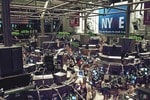
Is Amazon an AI Stock?
With the market starting to look skittish on pure-play AI…


With the market starting to look skittish on pure-play AI…

Alphabet (NASDAQ:GOOGL) and NVIDIA (NASDAQ:NVIDIA) are two of the market’s…

NVIDIA (NASDAQ:NVDA) has been one of the best stocks to…
Market Cap: $4.5T
P/E Ratio: 62x
Market Cap: $4.1T
P/E Ratio: 38x
Market Cap: $3.8T
P/E Ratio: 40x
SMX (Security Matters) Plc [SMX] is up 154.74% over the past day.
Hovnanian Enterprises, Inc. [HOV] is down 22.58% over the past day.
Nutex Health, Inc. [NUTX] is up 18.9% over the past day.